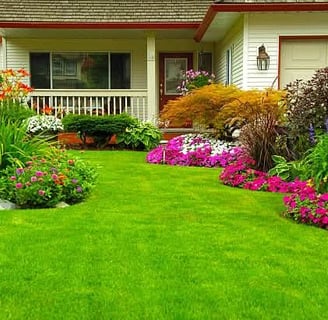How to Create an Eco-Friendly Garden: Sustainable Practices for a Greener Future
Overview: This post can provide readers with practical ideas and tips on creating a garden that is both beautiful and environmentally sustainable. Topics to cover: 1. Use Native Plants Native plants require less water, fertilizer, and pesticide than non-native species, making them ideal for sustainable gardening. They also support local wildlife, such as birds, pollinators, and beneficial insects. 2. Rainwater Harvesting Set up a rainwater collection system using barrels or other containers to water your garden. This reduces the use of municipal water, lowers your water bill, and minimizes your environmental impact. 3. Composting Composting kitchen scraps and yard waste reduces landfill waste and provides nutrient-rich soil for your garden. It helps improve soil structure, increases moisture retention, and promotes healthy plant growth without synthetic fertilizers. 4. Mulching Apply organic mulch, such as leaves, straw, or wood chips, to your garden beds. Mulch conserves moisture, reduces the need for frequent watering, suppresses weeds, and improves soil fertility over time. 5. Organic Gardening Practices Use natural methods for pest control, such as introducing beneficial insects (like ladybugs or predatory beetles) or using homemade remedies (e.g., neem oil or garlic spray) instead of chemical pesticides. 6. Grow Your Own Food Start a vegetable or herb garden to reduce the carbon footprint associated with store-bought produce. Growing your own food ensures that you have access to fresh, organic ingredients and reduces the need for packaging and transportation. 7. Create a Wildlife-Friendly Habitat Design your garden to attract and support local wildlife, such as bees, butterflies, and birds. Include flowering plants for pollinators, bird feeders, birdhouses, and water sources like a small pond or birdbath. 8. Solar Garden Lighting Replace energy-draining outdoor lights with solar-powered garden lights. They charge during the day and provide ambient light at night without contributing to electricity consumption. 9. Raised Beds and Vertical Gardens Raised garden beds reduce the need for tilling and improve soil drainage. Vertical gardening is another great space-saving solution for small gardens, allowing you to grow plants like tomatoes, cucumbers, and herbs efficiently. 10. Reduce Lawn Areas Traditional lawns often require a lot of water, fertilizers, and pesticides to maintain. Consider replacing grass with low-maintenance ground covers, native plants, or garden beds that are both eco-friendly and aesthetically pleasing. Conclusion: Creating an eco-friendly garden not only benefits the environment but also promotes biodiversity and provides fresh produce. By incorporating sustainable practices, gardeners can create a vibrant, low-maintenance space that supports local ecosystems and reduces environmental impact.


My post content